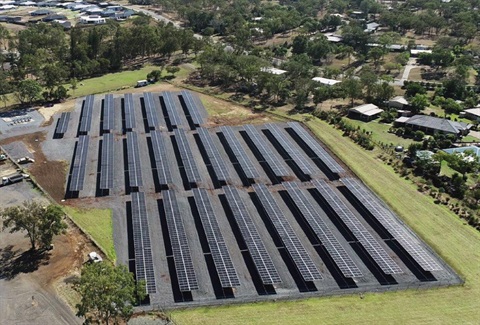Reducing emissions

Council has committed to transition towards net zero emissions in line with national and state policies and targets. Council is also working with local business, industry and other levels of government to support the transition towards net zero emissions.
Council emissions
Council delivers a wide range of community services and maintains essential community infrastructure, often with associated emissions. This includes:
- The management of Council buildings and facilities, including an airport.
- Operating a fleet of vehicles including passenger vehicles, utility vehicles, and a large range of plant and machinery.
- Maintenance of local roads, drainage, public lighting, parks and reserves, and sporting facilities.
- The management of libraries, depots, theatre and arts centres, an airport, community and civic centres, a childcare service, and aquatic, sports and leisure facilities.
- Waste collection services and operating a landfill.
- Water and wastewater treatment.
As we transition towards net zero emissions, Council is doing its part to monitor and reduce emissions within its operational control. Council’s is on the path towards net zero emissions for its operations and services by implementing the following:
- Scope 1 emissions reduction includes landfill gas management, waste diversion from landfill, improved wastewater treatment processes and the transition to low emissions vehicles.
- Scope 2 emissions reduction includes transitioning to renewable electricity sources.
- Scope 3 emissions reduction is progressed by considering emissions within Council’s supply chain, procurement, contracts and capital works.
Some of Council’s key emissions reduction achievements to date include:
- A 1.38MW solar system at the Glenmore Water Treatment Plant (under construction).
- A 976kW solar system at the Rockhampton Airport (under construction).
- Solar systems at other high energy consuming Council facilities including the Rockhampton Museum of Art (RMoA), North Rockhampton Library and the Animal Management Centre.
- LED lighting and energy efficiency initiatives at key facilities.
- Landfill gas flaring to reduce emissions associated with the Lakes Creek Waste Management Facility.
- An Environmentally Sustainable Design (ESD) Procedure for the design, construction and renewal of Council buildings and facilities.
- Introduction of a number of electric vehicles as part of Council’s light vehicle fleet.
- Grading and reuse of road and construction materials.
- A Food Organics and Garden Organics (FOGO) trial.
Community emissions
Council’s emissions account for only a small proportion of the region’s total emissions, with the remaining municipal emissions coming from residential, commercial, and industrial sources (collectively known as community sources). While Council does not have direct influence over major municipal emissions sources, like community electricity use or transport choices, it does play an important role in advocating for initiatives that can accelerate the region’s progress towards state and national emissions reduction targets.
Council is supporting community emissions reduction in the following ways:
- Leading the Resource Recovery Strategy and introduction of new waste diversion initiatives at the Community Recycling Centre and Waste Transfer Stations.
- Funding community initiatives via the Community Assistance Program – Environment and Sustainability Grants.
- Increasing access to active transport with an extensive network of shared pathways and cycle lanes.
- Supporting local installation of public electric vehicle charging stations.
- Collaborative stewardship efforts as part of the Reef Guardian Council program, protecting the Great Barrier Reef from climate change impacts and advocating for Commonwealth Government investment in new local initiatives.
- New community partnerships building local job readiness skills, delivering on ground works and driving sustainability outcomes, across the Region.
- Local business and industry development outcomes associated with the Region’s renewable energy opportunities, Making Water Work program and Circular Economy Pathway.
- Strategic planning and economic development activities to position the region for future investment as we transition towards net zero.
To find out more about Council’s initiatives, take a look at the Sustainability Strategy and Year in Review.